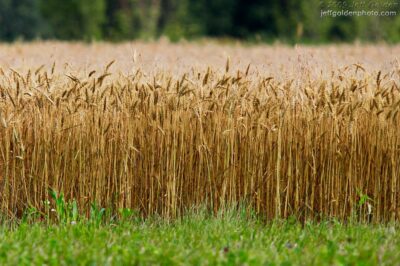With Passover having just been observed, we hope you’re now enjoying the seven day Feast of Unleavened Bread. Personally, we find the feasts are especially meaningful this year despite–or perhaps because of–perilous events impacting Jews everywhere.
Unleavened Bread and First Fruits
Scripture seems more real and alive than ever as circumstances compel us to lean more heavily into God and the beauty of His Word. With every bite of matzah (unleavened bread) we are reminded He so loves us that He gave us Messiah Jesus/Yeshua to purge sin (symbolized by leaven) from our hearts and lives, and to restore precious, loving, holy communion with Himself.
But that’s not all. Coming this Sunday is the wonderful, pinnacle Messianic feast known as First Fruits. (Exodus 34:18, Leviticus 23:6-14, also 1 Corinthians 15:20) According to the biblical calendar, First Fruits falls this year on April 28. The feast marks the commemorative, levitical date of Yeshua’s Resurrection. (Traditional Christians adhere to the Gregorian calendar and so most believers celebrated Resurrection Day last month as Easter. Nevertheless, we can rejoice together that “He is risen!”)
Biblical Background to the Omer Count
The season of spring feasts includes yet another, overlapping and set apart time in God’s calendar, Sefirat HaOmer. Sefirat HaOmer means “Counting the Omer.” An omer was a unit of dry measure used in biblical times f0r calculating the volume of grain. To observe this agricultural feast, God merely told us to count seven weeks or 50 days from Passover to the Feast of Weeks. Therefore tonight, 25 April 2024, is Day 3 of the omer count according to Jewish tradition.
During Sefirat HaOmer, God commanded the Israelites to bring the first measure (“omer”) of the early harvest to the Temple. This was to serve as both a dedication and thank offering for the upcoming harvest and provision:
“From the day after the Sabbath [of or following Passover], the day you brought the sheaf of the wave offering [omer], count off seven full weeks. Count off fifty days up to the day after the seventh Sabbath, and then present an offering of new grain to the Lord.” (Leviticus 23:15-16, see also Deuteronomy 16:9).
The start date of the omer count is slightly ambiguous. Different interpretations exist as to when the “day after the Sabbath” occurs. In Scripture, Passover is regarded as a Sabbath, so Jewish tradition starts counting on the first day after Passover. But others understand the “Sabbath” to refer to the first Saturday following Passover, so the count does not begin for them until days later. This interpretation is more consistent with the timing of the Crucifixion and Resurrection, so some Messianic believers prefer to start counting on the latter date.
Yeshua at the Center
Today, Sefirat HaOmer is usually observed by reciting a short, daily prayer of blessing. The prayer simply states how many days have passed leading up to the 50th day: “Blessed are You, Lord our God, King of the Universe, who sanctifies us by His commandments and commands us to count the omer. Today is Day 1 (or 2 or 3, etc.) of the omer count.”
Believers in Yeshua who wish to count the omer can alter or amplify the traditional blessing to reflect that we are graciously sanctified by the atonement of Yeshua and ongoing ministry of the Spirit. We can give special thanks and praise to God for His past, present, and future provision. All that He provides can be dedicated back to Him. In reality it is Yeshua that we celebrate on Sefirat HaOmer.
According to tradition, it was at the end of the seven week count that God gave Israel the treasure-gift of the Law. Scripture identifies this “moed” or date as the Feast of Weeks (“Shavuot”). Rabbis teach that while on Passover God delivered us from slavery, after which He provided for us in the wilderness (related to the Feast of Unleavened Bread), on Shavuot He entered into marital like covenant with us by the giving of His Word. The 50 days in between Passover and Shavuot represent a period of progressive revelation of YHVH and maturing of relationship with Him.
Rabbinic tradition notwithstanding, during these seven weeks we can seek God’s grace to be especially intentional about leaning into Him and His Word, that we might better know His goodness and glory, sovereignty and supremacy, majesty and might. It is as good a time as any to reconsecrate ourselves to the leadership and infilling of Holy Spirit.
In the New Covenant, Yeshua’s Resurrection, Ascension and 500+ post-Resurrection appearances, including Emmaus Road encounter, all took place during Sefirat HaOmer. (Luke 24:13-55, 1 Corinthians 15:6-7) Then, weeks later on Shavuot, God gave the unparalleled gift of His Presence, the indwelling Holy Spirit. That day is known as Pentecost, stemming from the Latin and Greek words for 50, reflecting the 50th day of the omer count. Pentecost is regarded as the birth date of the Church, the Bride of Messiah, one new humanity in Him. (Incidentally, it is believed that events recounted in the book of Ruth, with its prophetic message of one new humanity, took place during Sefirat HaOmer.)
There’s still more. During the omer count of 1948, on May 14, Israel was born again as a re-established Jewish state. During Sefirat HaOmer 1967, Jerusalem was restored to Israel, along with Jewish access to the Temple Mount. God was speaking to all humanity. His covenant restoration of Israel had begun, and with it, a new era of history. Simultaneously, a revival broke out that impacted nations, known now as the Jesus Movement.
If Sefirat HaOmer stirs your spirit you might consider counting the omer — and making it count. Because Yeshua is the crowning center of it all.


